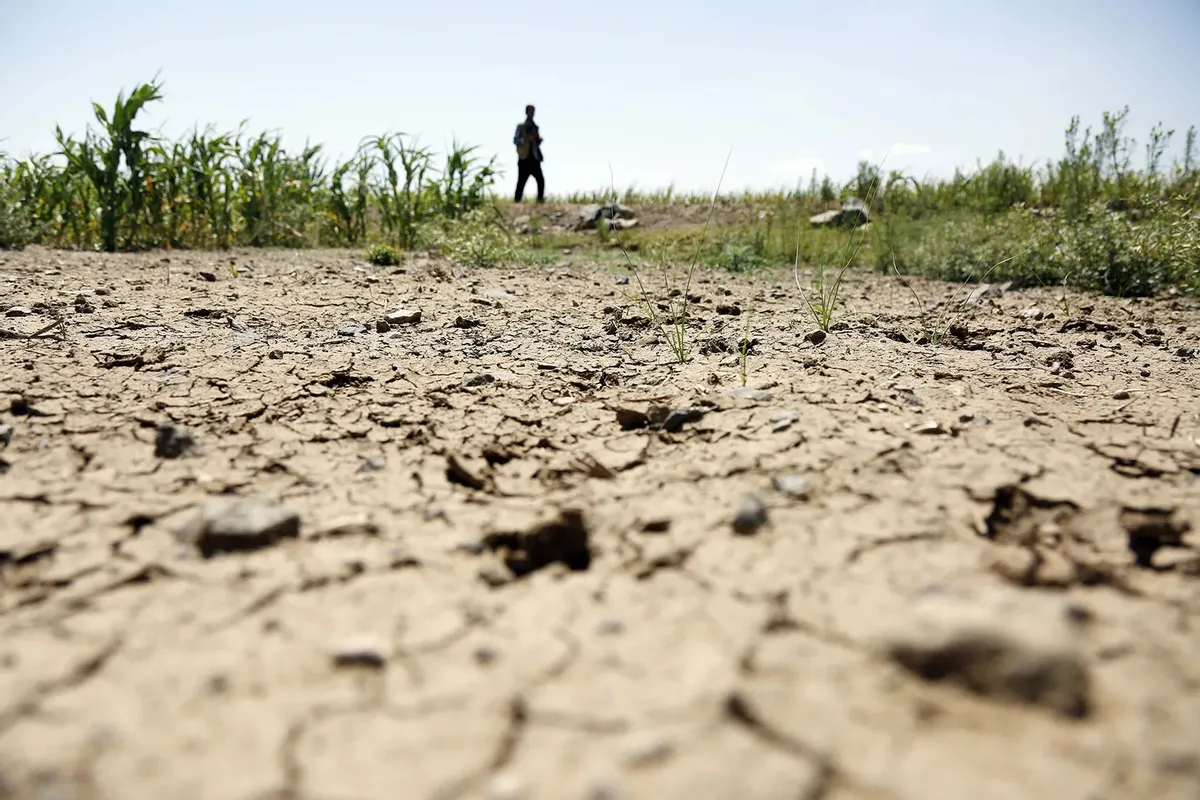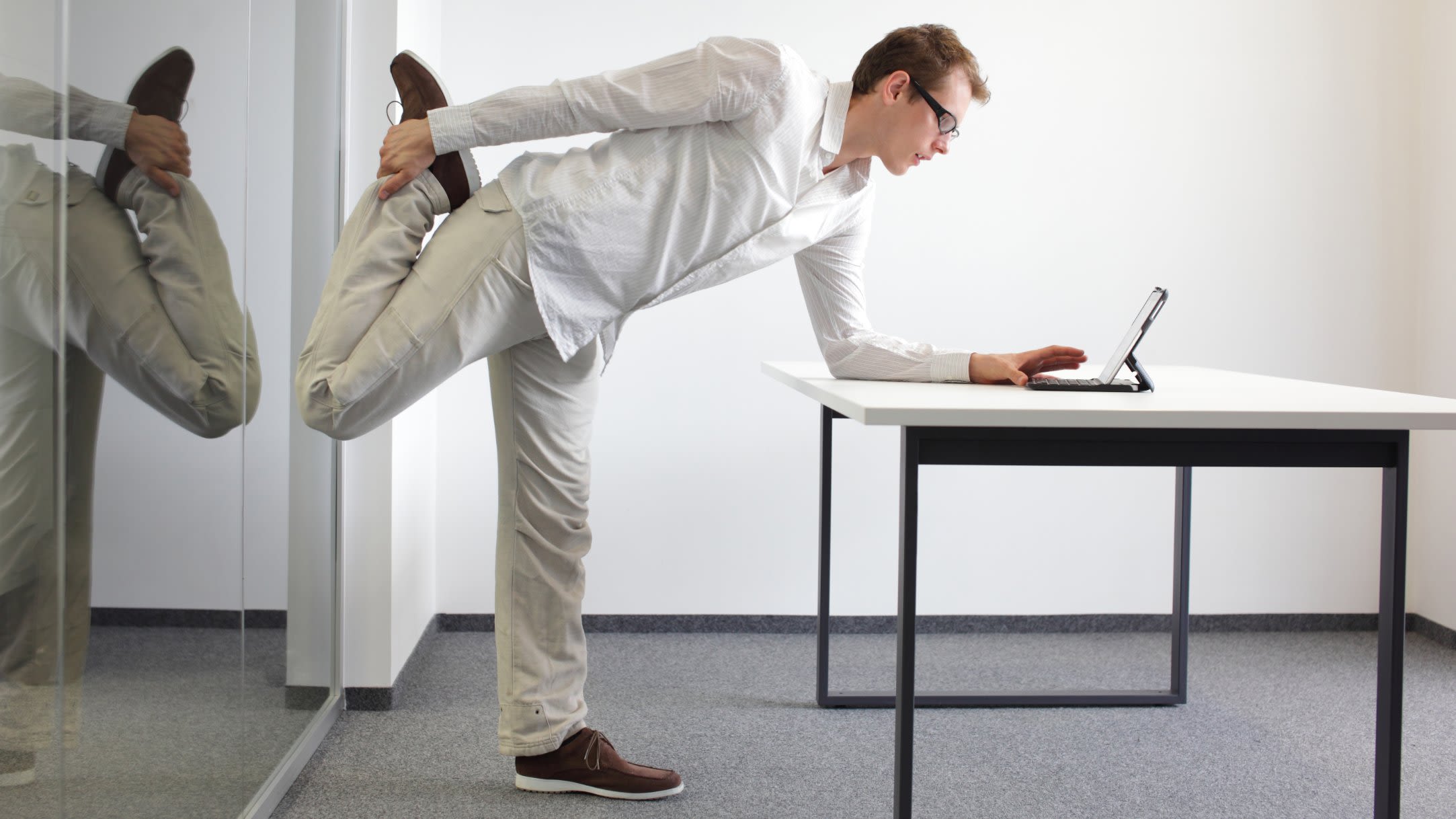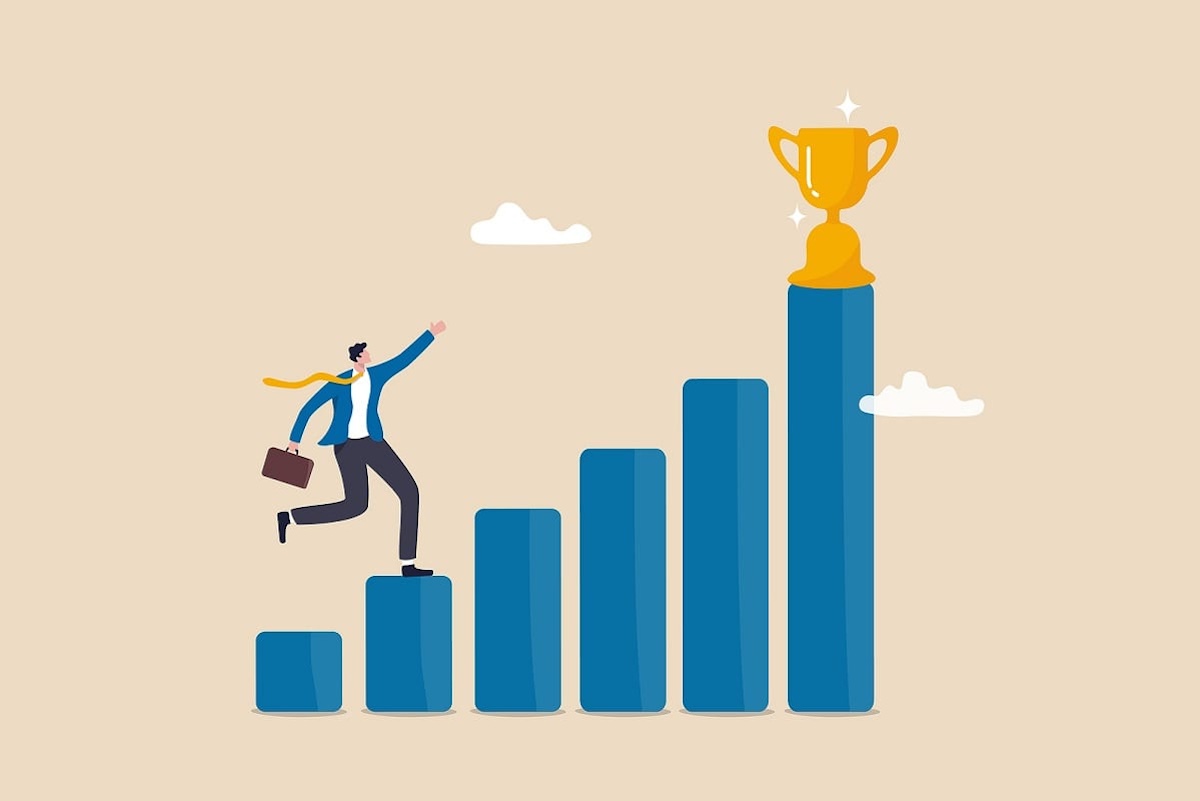Life
Frozen Frontier Antarctica and the Future of the World
Published
2 years agoon
By
Amanda Brown
Antarctica, the frozen continent at the world’s southernmost point, is the most extreme place on the planet. With 98% of its landmass permanently covered in ice, Antarctica is home to several scientific research stations and bases, where scientists worldwide come to study the continent’s geology, wildlife, and climate.
In this article, we will explore the science of Antarctica and how it helps us understand our planet and its climate.
Ice Cores: A Glimpse into the Past
One of the key areas of study in Antarctica is ice cores. The ice in Antarctica is over 1.9 miles thick in the middle of the continent, resulting from thousands of years of snow falling on snow.
The small air bubbles trapped in the ice offer a unique glimpse into the quality of the air on the planet across history. Scientists have drilled down to the bottom of the ice, where it is over 800,000 years old, more than twice as old as the oldest known Homo sapiens fossils.
By measuring the carbon dioxide levels in the air bubbles, scientists have discovered that carbon dioxide concentrations in the air have never been as high as they are today. This discovery tracks temperatures, with higher carbon dioxide levels leading to higher temperatures and lower carbon dioxide levels leading to lower temperatures.

This evidence has closed the debate on whether carbon dioxide directly impacts Earth’s temperatures; it does.
The study of ice cores has provided us with a wealth of information about the planet and its climate. It has allowed us to understand the impact of carbon dioxide on the planet and how it has affected temperatures over time.
The ice cores have also helped us understand the air quality on the planet across history and how it has changed over time.
Melting Glaciers and Rising Sea Levels
Another area of focus in Antarctica is melting glaciers and rising sea levels. When floating ice melts, it displaces its own weight in water, meaning the water level stays nearly the same. The concern is the ice that newly flows from land into the sea, as warming is causing shelves around the continent to break up.
One such example is the Thwaites Glacier, also known as the “Doomsday Glacier,” which is one of the parts of Antarctica most at risk.
The ice shelf is melting from below because of warmer water, breaking apart in many places. If it goes, there won’t be anything to keep back the land glacier behind it, which could raise seas around the world by about two feet.
The melting glaciers and rising sea levels remind us of our immense responsibility, and the choices we make in the coming decades will affect countless generations to come. The science of Antarctica has allowed us to understand the impact of climate change on our planet and the consequences of our actions.

The Importance of Antarctica
The science of Antarctica is vital in helping us understand our planet and its climate. The ice cores offer us a window into the past and help us understand the impact of carbon dioxide on the planet.
Melting glaciers and rising sea levels remind us of our immense responsibility, and our choices in the coming decades will affect future generations.
Antarctica is a window into our planet’s climate and history. The science of Antarctica has provided us with a wealth of information and helped us better understand the impact of our actions on the planet.
It is a testament to the importance of scientific research and the need for continued investment in environmental studies. As we face the challenges of a changing climate, the lessons we have learned from Antarctica will be crucial in guiding our decisions and ensuring a sustainable future for future generations.
We are responsible for protecting this unique place and supporting scientific research in Antarctica so that we can continue to learn from this incredible continent and protect our planet for future generations.
Key Takeaways
- Antarctica is protected by the Antarctic Treaty, signed in 1959, which makes it a nature reserve for all of humanity, dedicated to scientific research and peaceful pursuits.
- The Antarctic Treaty System is a collection of agreements that build upon the original treaty and limit the military presence and commercial exploitation on the continent.
- The international community has come together to support scientific research in Antarctica, fostering a high level of collaboration among the countries operating research stations on the continent.
- Antarctica serves as a model for international cooperation, demonstrating how the world can come together to protect a shared resource for the good of all.
- In 2048 the Antarctic Treaty will be reviewed, and the world will face a critical test of its capacity to cooperate and protect this unique and essential place.
Related
You may like
Life
Start Your Day Right: The Benefits of a Clutter-Free Desk
Published
8 months agoon
August 18, 2024By
Samy Deyyab
In today’s fast-paced world, it’s easy for our workspaces to become cluttered with papers, gadgets, and miscellaneous items. While this might seem harmless, a disorganized desk can negatively impact your focus, productivity, and even emotional well-being. Fortunately, the solution is simple: start your day by cleaning your desk.
The Science Behind a Clean Desk
Why does tidying up make such a difference? A key reason lies in how our brains process visual information. Studies like those conducted at Princeton University have demonstrated that cluttered environments overwhelm the brain’s visual cortex, making it harder to concentrate and process information. This clutter-induced distraction leads to irritability, stress, and reduced productivity.
Moreover, a study by DePaul University revealed that clutter is a significant predictor of procrastination. When our environment is chaotic, we tend to put off tasks, leading to a cycle of stress and decreased quality of life. Another study from UCLA found that people who perceive their homes as cluttered experience higher levels of cortisol, the stress hormone, which is linked to negative health outcomes like depression and anxiety.
By taking a few minutes each day to organize your workspace, you can significantly improve your mental clarity, emotional stability, and decision-making abilities.
Practical Steps to Declutter
1. Start small:
Begin with the most frequently used areas, such as your desk or computer desktop. This approach makes the task manageable and prevents you from feeling overwhelmed. Use the five-minute rule: dedicate just five minutes to tidying up. Often, this small commitment leads to much more progress than anticipated.
2. Embrace digital tools:
Technology can be a great ally in staying organized. Utilize digital task management apps like Todoist or Trello to keep track of your to-do lists and deadlines. Cloud storage solutions like Google Drive or Dropbox can help you declutter your physical space by digitizing important documents. By leveraging these tools, you can physically and digitally maintain a clean and organized workspace.
3. Schedule regular maintenance:
Staying organized is an ongoing process. Set aside 10-15 minutes each day for “maintenance” time. This could be as simple as filing away papers, deleting unnecessary files from your computer, or tidying up your workspace. Consistency is key, and this small daily habit can prevent clutter from accumulating.
4. Automate Routine Tasks:
Automation can also help keep your workspace organized. Use tools like Zapier to automate repetitive tasks, such as sorting emails or backing up files. By reducing the manual work involved in maintaining your digital space, you free up mental bandwidth for more important tasks.
5. Make It Fun:
For those who find cleaning a chore, turn it into a social activity. At work, consider organizing team-wide “spring cleaning” days where everyone tidies up their workspace together, perhaps with music or snacks. For your workspace, set a timer and challenge yourself to see how much you can accomplish in that time. Making the process enjoyable can increase your motivation to keep your space tidy.
The Broader Impact of Decluttering
A clean workspace does more than just make you feel better in the moment—it sets the stage for long-term success. By removing physical obstacles, you also clear mental obstacles, leading to improved focus, better decision-making, and a greater sense of control over your environment. This psychological boost can extend to other areas of your life, helping you tackle challenges with greater confidence and clarity.
Incorporating technology into your decluttering efforts not only streamlines the process but also helps you stay organized in the long run. Whether it’s through digital task management, automation, or regular maintenance, these tools can play a crucial role in maintaining a clear, focused, and productive work environment.
In a world filled with distractions, maintaining a clean and organized workspace is more important than ever. By starting your day with a simple act of decluttering, you can harness the power of emotional intelligence to improve your focus, reduce stress, and enhance your overall productivity. So the next time you’re feeling overwhelmed, take a few minutes to tidy up your desk. Your mind—and your work—will thank you.
Related
Life
Mind Games in Marketing: How Companies Influence Our Choices
Published
1 year agoon
December 17, 2023By
Jimmy Walter
In the ever-changing world of marketing and design, brands have developed sophisticated strategies to influence consumer behavior and perceptions. From the medicine we take to the cars we drive, the power of branding shapes every aspect of consumer choice.
The Psychological Influence of Branding
Branding is more than just a marketing tool; it’s a psychological phenomenon that can significantly shape our actions and physiological responses. A striking example is the effectiveness of medicines based on their branding.
Identical ingredients in a branded medicine like Tylenol and its generic counterpart can yield different perceptions of effectiveness due to the price or packaging color. Similarly, the mere presence of a familiar logo, such as MasterCard, can trigger customers to spend up to 30% more. These examples underscore how branding taps into our subconscious, influencing our decisions and experiences without explicit awareness.
Branding is a psychological phenomenon, subtly shaping our choices and experiences.
Beyond its psychological effects, branding has evolved into a placebo, offering more than a product. Companies now sell a sense of belonging and identity. This phenomenon is not new; it traces back to ancient times when craftsmen would imprint symbols on their goods as a mark of authenticity and origin.
However, modern branding has taken this concept to new heights. By crafting a unique brand image and narrative, companies reel in consumers, offering them a sense of inclusion in a particular ‘tribal’ group. This powerful tool leverages our innate desire for social belonging and identity, driving our purchasing decisions.
The Role of Visual Signaling
A critical aspect of branding is its reliance on visual elements to convey a product’s quality and benefits. From the stripes on toothpaste tubes to the design of food packaging, visual signals play a pivotal role in shaping consumer perceptions and trust.
However, this visual shorthand can sometimes cross ethical boundaries, leading to deceptive practices. For example, car companies may add fake vents to their designs, creating an illusion of enhanced performance. This manipulation highlights brands’ fine line between honest representation and misleading consumers for increased sales.
Visual elements in branding are pivotal in forging consumer trust and perception.
One of the more cunning tactics in the branding playbook is the creation of artificial scarcity. Brands like Apple or certain fashion labels release limited quantities of new products, generating a fear of missing out and driving up demand.
This strategy capitalizes on human psychology, where we desire what we perceive as scarce or exclusive. However, this often leads to ethical dilemmas, as companies intentionally limit supply not due to production constraints but as a marketing ploy.
The Ethics of Branding
The ethics of branding are a complex and nuanced topic. While branding can foster a sense of community and enhance the consumer experience, it often prioritizes company profits over truthful representation.
Consumers should be aware of these tactics, recognizing that brands are ultimately tools for increasing sales, not benevolent entities safeguarding values or social causes. For instance, when a brand aligns with political or social issues, it is often a calculated move to tap into consumer sentiments and loyalty rather than a genuine commitment to the cause.
Ethically navigating branding’s power demands informed consumer awareness and discernment.
In conclusion, the influence of branding on our daily lives is profound and multifaceted. From shaping our perceptions of product effectiveness to fostering a sense of identity and belonging, branding has become an integral part of the consumer experience.
However, it’s crucial for consumers to remain aware of companies’ tactics and understand the line between clever marketing and manipulative practices. By doing so, we can make more informed choices, recognizing the power of branding while remaining cognizant of its potential to mislead and manipulate.
As we navigate this complex landscape, it’s essential to remember that while branding can create meaningful experiences, it should never compromise our ability to discern reality from marketing fiction.
Related
Life
2023: A Year of Dire Warnings and Glimmering Hope
Published
1 year agoon
December 16, 2023By
Amanda Brown
As 2023 came to a close, it left behind a complex environmental legacy that was both marked by extreme weather events and innovative breakthroughs. On the one hand, the world witnessed the devastating consequences of climate change, with scorching heat waves, devastating wildfires, and rising sea levels disrupting human life and ecosystems.
On the other hand, there were also signs of hope as nations stepped up their efforts to combat climate change and protect biodiversity, and innovative technologies emerged to address environmental challenges.
Climate Crisis
2023 was one of the hottest years ever recorded, with temperatures edging closer to the 1.5°C threshold set by the Paris Climate Agreement. Heatwaves ravaged Europe, North America, and Asia, pushing temperatures above 40°C in cities like London and Paris. Forest fires burned across continents, turning vast swathes of land into infernos.
The melting of polar and mountain glaciers accelerated, with the extent of Arctic sea ice reaching a record low in September and the Greenland ice sheet losing a staggering 26 billion tons of ice in a single day.

The Intergovernmental Panel on Climate Change (IPCC) issued a stark warning this year, stating that human activity is fundamentally altering the climate system in unprecedented and often irreversible ways.
Carbon dioxide levels in the atmosphere reached 419 parts per million in 2023, surpassing the previous year’s record and cementing the reality of a warming planet.
Conflicts and Challenges
Economists have called for policies that incentivize a shift towards low-emission energy sources, such as carbon taxes, to address the market failures contributing to the climate crisis.
The ongoing war in Ukraine has raised concerns about the impact of conflicts on the global transition to clean energy. Will the conflict lead to increased investment in fossil fuels, hindering progress towards cleaner energy sources? Or will it catalyze the acceleration of the adoption of renewable energy, demonstrating its resilience and potential?
Despite these challenges, the world will witness a noticeable increase in the use of renewable energy sources in 2023. Countries like Germany and Denmark achieved record shares of clean energy in their electricity grids, highlighting the viability and potential of solar and wind power. Investment in solar energy surged, with installations reaching new heights around the globe.

A Glimmer of Hope
Amidst the dire warnings and extreme weather events, there were signs of hope and resilience. Global efforts to combat climate change continued to gain momentum in 2023, with the focus shifting towards implementing radical emission reductions to keep global warming within 1.5°C. Interest in developing carbon capture and storage technologies also intensified, demonstrating the commitment to addressing the root cause of the climate crisis.
The World Climate Summit (COP28) in Dubai provided a platform for nations to unite in their efforts to address climate change and protect biodiversity. The summit highlighted the need for a fair and equitable approach to addressing the climate crisis, ensuring that developing nations have access to the necessary resources to adapt to and mitigate the effects of climate change.
A Sustainable Future
The year 2023 saw the development of innovative technologies and solutions to address environmental challenges. Pioneering projects like harvesting solar energy using water canals in India and growing “alternative meat” in Singapore laboratories demonstrated the potential for transformative innovation in the realm of sustainability.

Electric vehicles gained broader adoption in 2023, as major automakers announced ambitious plans to phase out conventional motor vehicles. While carbon capture and storage technologies are still in their early stages, they promise to mitigate the effects of greenhouse gas emissions and contribute to achieving global net-zero emissions by 2050.
On a societal level, 2023 witnessed a surge in popular movements and youth initiatives demanding action on environmental issues. From climate strikes calling for serious action from world leaders to local groups organizing cleanups and tree plantings, individuals worldwide came together to create positive change.
As we bid farewell to 2023, we are left with a complex environmental legacy. While the challenges remain daunting, the year also witnessed inspiring innovations and a growing commitment to addressing the climate crisis and protecting biodiversity.
The path forward is uncertain, but the glimmer of hope offers a roadmap towards a sustainable future.
Related

In the modern work environment, many of us find ourselves tethered to our desks, immersed in the digital world for the better part of our day. This sedentary lifestyle can lead to a host of health issues, from obesity to heart disease.
However, staying fit while working a desk job isn’t just a possibility; it’s necessary to maintain overall health and well-being.
Here’s a comprehensive guide to staying active and healthy, even in front of a computer.
Workplace Wellness
First and foremost, setting up an ergonomic workspace is crucial. Ergonomics, the science of designing the workplace to fit the user’s needs, aims to improve efficiency and reduce discomfort. Ensure that your chair supports your lower back, your feet are flat on the ground, and your computer screen is at eye level to avoid strain.
An ergonomic keyboard and mouse can also prevent repetitive strain injuries. Investing in a standing desk or an under-desk elliptical can be beneficial, too.

Mini Workouts
Integrating mini-workouts into your daily routine can be remarkably effective. Take a five-minute break every hour to stretch or do a quick set of exercises.
Desk-based stretches, chair squats, leg lifts, or even simple neck and shoulder stretches can keep your muscles active.
These short bursts of activity improve physical health and boost mental alertness and productivity.
Walk and Talk
Incorporate movement into your communication. Opt for walking meetings instead of sitting in a conference room.
If you’re on a call, walk around your office or outside if possible. This not only breaks the monotony of sitting but also invigorates your mind.
Healthy Eating at Work
Diet plays a significant role in staying fit. Avoid the temptation of snacking on junk food. Opt for healthier options like fruits, nuts, or yogurt.
Keep a water bottle at your desk to stay hydrated. If you’re prone to forgetting, set reminders to drink water throughout the day.

Stress Management
Prolonged computer work can be mentally taxing. Practice mindfulness and stress management techniques like deep breathing or meditation during breaks. Apps that guide you through short meditation sessions can be easily incorporated into your workday.
Incorporating these practices into your daily work routine can significantly improve your fitness and overall health. Remember, it’s the small changes that make a big difference over time.
With a combination of ergonomic awareness, mini workouts, movement-integrated communication, healthy eating, and mindfulness, you can maintain a high level of fitness, even while working a desk job.
Stay active, eat well, and engage your mind for a healthier work life.
Related
Life
How to Kickstart Your Motivation and Thrive
Published
1 year agoon
December 11, 2023By
Mona Rossy
As we navigate the prolonged waves of the pandemic, a common narrative has emerged among individuals from all walks of life. Many are finding themselves trapped in a state of stagnation and emptiness, a phenomenon that has become all too familiar in our current global situation.
This feeling, often termed ‘languishing,’ has become a shared experience, resonating deeply with people worldwide.
The Double-Edged Sword of Rest
The feeling of stagnation or immobility, frequently accompanied by a sense of emptiness, is what languishing encapsulates. It’s as if life is being viewed through a foggy lens, where days blend into one another without a sense of progress or fulfillment.
This feeling gained widespread recognition during the pandemic, offering individuals a label for their experiences and a sense of solidarity with others in the same boat.
The initial prescription was rest in response to this widespread sense of burnout and emotional fatigue. Physical, emotional, social, and spiritual rest were all emphasized as crucial for recovery.

However, an extended period of rest has its pitfalls. It can lead to a state of inertia where, despite feeling physically recovered, a psychological sense of disconnection and listlessness persists.
Enter the concept of behavioral activation, a strategy developed in the 1970s. This approach challenges the notion that motivation precedes action. Instead, it posits that taking action, even in small ways, can catalyze motivation. This idea is particularly potent when feeling stuck, as it encourages movement and progress, however incremental.
Moving Beyond Forced Positivity
Behavioral activation contrasts the now-debunked concept of forced positivity – the idea that simply thinking positive thoughts can lead to happiness and success. Current understanding suggests that controlling thoughts and feelings often has the opposite effect. Instead, behavioral activation focuses on engaging in meaningful activities and aligning actions with values and interests, regardless of the prevailing mood or emotional state.
A key aspect of moving beyond languishing involves a shift in mindset. It’s about recognizing and accepting negative emotions without allowing them to dictate one’s actions. This means giving oneself permission to feel low or unmotivated but not seeing these feelings as permanent or insurmountable.
Activation Energy: The Initial Push
The concept of ‘activation energy’ is crucial in this context. It refers to the effort required to initiate a task or activity. During times of stress or emotional fatigue, like in the current pandemic, this activation energy might be higher. Recognizing and accepting this can be the first step in overcoming inertia.
Once the initial resistance is overcome, momentum can start to build. Engaging in minor activities can create a positive feedback loop where action begets more action. This process can gradually lead to an improvement in mood and a sense of accomplishment.

The Role of Small Steps
When dealing with the overwhelming feeling of languishing, small steps matter. It’s about setting manageable goals and celebrating minor victories. Whether making a phone call, organizing a walk with a friend, or dedicating time to a hobby, each small action is a step away from stagnation.
It’s essential to remember that the state of languishing is not permanent. As daunting as it may seem to initiate change while feeling stuck, the effort is worthwhile. The more we engage in actions aligned with our interests and values, the easier it becomes to break free from the rut.
As we continue to face the challenges brought on by the pandemic, it’s crucial to recognize the impact of languishing on our mental health. We can find a way out of the fog by embracing behavioral activation and acknowledging our emotions without letting them control us. It’s about taking that first step, however small, and building momentum from there. In doing so, we can rediscover our motivation and sense of purpose, moving towards a brighter, more fulfilling future.
Related
Life
Echoes of the Mind: The Power of Inner Dialogue
Published
2 years agoon
September 15, 2023By
Mona Rossy
Have you ever caught yourself mumbling under your breath about an annoying task or silently cheering yourself on before a big presentation? Congratulations, you’re part of the majority!
The world of self-talk, that little voice inside us, holds more power and potential than most realize. Dive in to unravel the mysteries of this everyday phenomenon.
The Ubiquity of Inner Conversations
It’s a bright morning, and as you scramble to silence the blaring alarm, a soft mutter escapes, “Why on earth did I set it so early?” Moments later, while brushing your teeth, the mirror reflects a contemplative face: “Maybe it’s time for a haircut. Or perhaps not?”
Welcome to the realm of self-talk, an experience almost all of us can relate to. This narration within our heads is as much a part of us as our heartbeat.

The Evolution of Self-Talk
Children, especially those at play, often verbalize their thoughts, openly engaging with imaginary friends or narrating their adventures. This isn’t merely child’s play, though.
Renowned Russian psychologist Lev Vygotsky pinpointed this kind of vocal self-talk as a cornerstone of children’s emotional and behavioral development. By replaying adult-like conversations, children learn to manage their behaviors and emotions.
As adulthood transitions, this external chatter turns inward, evolving into an intimate inner dialogue. Yet, its function remains pivotal.
It aids us in planning and decision-making and even offers that little push of motivation we so often need.
What We Tell Ourselves
Engaging in self-talk isn’t just a pastime; it genuinely affects our psyche. Let’s split this into two – the boon and the bane.
The Boon: Imagine gearing up for a tennis match. A gentle whisper of “I’ve got this, focus on the serve” can amp up concentration levels, translating into a stellar performance. Similarly, addressing oneself by name, a technique known as distanced self-talk can work wonders.
Picture yourself preparing for a nerve-wracking public speech. A motivating “Alex, you’ve got this!” can instantly dial down the anxiety, making the task seem less daunting.
The Bane: Like a coin, self-talk has another side. Negative chatter, “Why am I always messing up?”, can be slippery.
Too much of this, and we risk plunging into the depths of anxiety and depression. It’s akin to having a constant critic inside your head, scrutinizing every move.

Navigating the World of Self-Talk with CBT
Cognitive Behavioral Therapy, or CBT for short, shines a beacon of hope for those entangled in the web of negative self-talk.
This therapeutic approach focuses on recognizing, challenging, and then reshaping these negative narratives into neutral or positive reflections. Armed with these tools, one can cultivate a healthier, more compassionate relationship with that ever-present inner voice.
Embrace Your Inner Voice
There’s a saying, “Be careful how you speak to yourself because you are listening.” Embracing and fine-tuning our self-talk is more than just self-awareness; it’s an act of self-love. The next time you catch yourself in a silent conversation, remember its power.
Use it as a tool for growth, motivation, and emotional well-being. After all, that inner voice isn’t going anywhere. Why not make it a friend?
Related


Unlocking the Power of Smart Devices: What You Need to Know

Is a New Era of United States-China Space Collaboration Possible?

Can smart technology unlock a sustainable future?

Start Your Day Right: The Benefits of a Clutter-Free Desk

AI’s Journey Through the Heart of Political Change

Saudi Arabia’s Tech Revolution: A Blueprint for Global Innovation

Emerging Titan: India’s Strategic Move on The Global Chessboard

Use these services to get free cloud space

From Unity to Split: Is This Libya’s New Chapter?

Navigating The New Silk Road: A Ten-Year Retrospective

New Revolution in MENA Region: FAST and Ad-Supported

Echoes of the Mind: The Power of Inner Dialogue
Trending
-

 Poltics2 years ago
Poltics2 years agoEmerging Titan: India’s Strategic Move on The Global Chessboard
-

 Technology2 years ago
Technology2 years agoUse these services to get free cloud space
-

 Poltics2 years ago
Poltics2 years agoFrom Unity to Split: Is This Libya’s New Chapter?
-

 Poltics2 years ago
Poltics2 years agoNavigating The New Silk Road: A Ten-Year Retrospective
-

 Technology1 year ago
Technology1 year agoNew Revolution in MENA Region: FAST and Ad-Supported
-

 Life2 years ago
Life2 years agoEchoes of the Mind: The Power of Inner Dialogue


